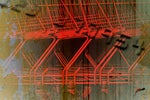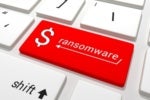The National Institute of Standards & Technology (NIST) discussed the need for truly random number generators in the April 2018 issue of Nature magazine. Turns out quantum computing is also really good at generating verified random numbers. The earliest verifiable quantum random number generators were very big (the size of a building at 200 meters long) and fairly slow.
How random numbers can save cryptography in a post-quantum world
CQC has delivered a hardware-based, “pizza box” prototype unit called IronBridge, about the size of a VCR, that is expected to generate about 4 million random bits per second – enough to be commercially viable for powering encryption protocols that provide quantum security today. Wow! All of those numbers are verified as being truly random by the mathematics and physics theorem Bell’s Inequality.
Who cares about getting these types of truly random numbers? Well, anyone hoping to protect data and information after quantum computing breaks the traditional methods. This includes governments, technology firms and any company who need to protect their valuable intellectual property, research and information.
For nearly two decades, I used to say that the day of quantum reckoning was 10 years away with the same commitment given the ideas of flying cars and underwater cities. I and others didn’t really believe it was coming anytime soon.
Today, it’s closer than ever before. We have working quantum computers and the number of qubits is growing fast. It’s no longer a hype-driven pipe dream. Nation-states and companies big and small are making substantive progress against the few remaining problems. It’s still just a matter of time, but it’s time to start measuring the arrival of quantum computing in months or years instead of decades.





























